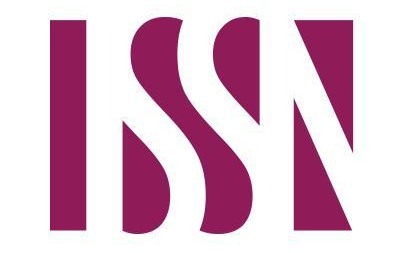Lifestyle Habits Among Sultan Qaboos University Students During COVID-19 “Stay-At-Home” Period
محتوى المقالة الرئيسي
الملخص
The aim of the present study was to enhance our understanding of COVID-19 quarantine’s effect on lifestyle of Sultan Qaboos University students. 192 male and 186 female students completed an online multi-section questionnaire between 15th April and 1st May 2020 five weeks after the beginning the “stay at home” period. Almost 34% of the students gained between 2kg – 4kg weight during this period. We found that more than half of the students slept less than the recommend 7 hours of sleep. Also, 75% of the students spent most of their daily time in front of screen (e.g., mobile phone & computers). Approximately 70% of students exercised at home 3-4 times at light or moderate intensity per week with an increase of physical activity levels for most of them. In contrast 29.2% of student engage in sedentary behaviours at home. The major effect of COVID-19 stay-at-home period on SQU students’ daily lifestyle had behaviours warrant the attention of SQU administrations and health practitioners to prevent or mitigate the potential adverse physical and psychological consequences.
تفاصيل المقالة

هذا العمل مرخص بموجب Creative Commons Attribution-NonCommercial 4.0 International License.
المراجع
Al-Yaaribi, A. (2021). University Students’ Motivation for Home-based Exercise during the COVID-19 Pandemic: Sex and Age Differences. Journal of Physical Education Research, 8, 01–09
AlMughamis, N., AlAsfour, S.; Mehmood, S. (2020). Poor eating habits and predictors of weight gain during the COVID-19 quarantine measures in Kuwait: A cross sectional study. Research Square, 9, 914.
Burke, S. M., Carron, A. V., Eys, M. A., Ntoumanis, N., & Estabrooks, P. A. (2006). Group versus individual approach? A meta-analysis of the effectiveness of interventions to promote physical activity. Sport & Exercise Psychology Review, 2, 19–35.
Chaput, J. P. (2014). Sleep patterns, diet quality and energy balance. Physiology & behavior, 134, 86–91. https://doi.org/10.1016/j.physbeh.2013.09.006
Chen, P., Mao, L., Nassis, G. P., Harmer, P., Ainsworth, B. E. and Li, F. (2020). Coronavirus disease (COVID-19): The need to maintain regular physical activity while taking precautions. Journal of Sport and Health Science, 9, 103–104. 10.1016/j.jshs.2020.02.001
Gupta, R., Grover, S., Basu, A., Krishnan, V., Tripathi, A., Subramanyam, A., Nischal, A., Hussain, A., Mehra, A., Ambekar, A., Saha, G., Mishra, K. K., Bathla, M., Jagiwala, M., Manjunatha, N., Nebhinani, N., Gaur, N., Kumar, N., Dalal, P. K., Kumar, P., … Avasthi, A. (2020). Changes in sleep pattern and sleep quality during COVID-19 lockdown. Indian journal of psychiatry, 62(4), 370–378. https://doi.org/10.4103/psychiatry.IndianJPsychiatry_523_20
Hammami, A., Harrabi, B., Mohr, M., & Krustrup, P. (2020). Physical activity and coronavirus disease 2019 (COVID-19): specific recommendations for home-based physical training. Managing Sport and Leisure, 27, 26–31 doi:10.1080/23750472.2020.1757494
Hirshkowitz, M., Whiton, K., Albert, S. M., Alessi, C., Bruni, O., DonCarlos, L., … Adams Hillard, P. J. (2015). National Sleep Foundation's sleep time duration recommendations: Methodology and results summary. Sleep Health, 1, 40–43. https://doi.org/10.1016/j.sleh.2014.12.010
Jiménez-Pavón, D., Carbonell-Baeza, A., and Lavie, C. J. (2020). Physical exercise as therapy to fight against the mental and physical consequences of COVID-19 quarantine: special focus in older people. Progress in Cardiovascular Diseases, 63. 386–388. doi.org/10.1016/j.pcad.2020.03.009
Marelli, S., Castelnuovo, A., Somma, A., Castronovo, V., Mombelli, S., Bottoni, D., Leitner, C., Fossati, A., Ferini- Strambi, L. (2020). Impact of COVID-19 lockdown on sleep quality in university students and administration staff. Journal of Neurol, 268, 1–8. doi:10.1007/s00415-020-10056-6
M. Xiang., Z. Zhang., & K. Kuwahara. (2020). Impact of COVID-19 pandemic on children and adolescents' lifestyle behavior larger than expected. Progress in Cardiovascular Diseases, 4, 531 – 532. doi.org/10.1016/j.pcad.2020.04.013
Kilani, H., Waly M., & Yousef, R. (2012). Trends of obesity and overweight among college students in Oman: A cross sectional study. Sultan Qaboos University Med J, 12, 69–76. doi.10.12816/0003090
Li, C., Zayed, K., Muazzam, A., Li, M., Cheng, J., & Chen, A. (2015). Motives for exercise in undergraduate Muslim women and men in Oman and Pakistan compared to the United States. Sex Roles: A Journal of Research, 72, 68–84.
Peçanha, T., Goessler, K. F., Roschel, H., & Gualano, B. (2020). Social isolation during the COVID-19 pandemic can increase physical inactivity and the global burden of cardiovascular disease. Am J Physiol Heart Circ Physiol, 318, H1441–H1446. DOI: https://doi.org/10.1152/ajpheart.00268.2020
Silva, R. M. F., Mendonca. C. R., Azevedo V. D., Memon. A. R., Noll, P. R. E. S., & Noll, M. (2022). Barriers to high school and university students’ physical activity: A systematic review. PLoS ONE, 4, e0265913. doi.org/10.1371/journal.pone.0265913
Tate, N. H., Yarandi, H. N., Jones, L. M., & Wilson, F. L. (2015). An examination of eating behaviors, physical activity, and obesity in African American adolescents: Gender, socioeconomic status, and residential status differences. Journal of Pediatric Health, 111(2), 230–240
UNESCO rallies international organizations, civil society and private sector partners in a broad coalition to ensure #Learning Never Stops. 26 March 2020. https://en.unesco.org/news/unesco-rallies-international-organizations-civil-societyand-private-sector-partners-broad
UNESCO. (16, July, 2020). Global Education Coalition. https://en.unesco.org/covid19/educationresponse/globalcoalition
Waly, M. I., Ali, A., & Kilani, H. A. (2014). Effects of dietary patterns, dietary glycemic load and physical activity level on the weight status of healthy female Omani university students. Asian J Clin Nutr, 6(3), 59–66. doi: 10.3923/ajcn.2014.59.66.
World Health Organization. (16, July, 2020). Stay physically active during self-quarantine https://www.euro.who.int/en/health-topics/health-emergencies/coronavirus-covid-19/technical-guidance/stay-physically-active-during-self-quarantine
Zayed, K., & Frieze, I. (2015). University Students’ Motives to Exercise According to the Self-Determination Theory. Journal of Educational and Psychological Studies, 9, 340–350. doi.org/10.53543/jeps.vol9iss2pp340-350
Zeigler, Z. (2021). COVID-19 Self-quarantine and Weight Gain Risk Factors in Adults. Obesity Research & Clinical Practice, 10, 423–433. doi.org/10.1007/s13679-021-00449-7





 IASJ
IASJ CC-BY-4.0
CC-BY-4.0 turnitin
turnitin ISSN
ISSN DOAJ
DOAJ Crossref
Crossref GoogleScholar
GoogleScholar Orcid
Orcid